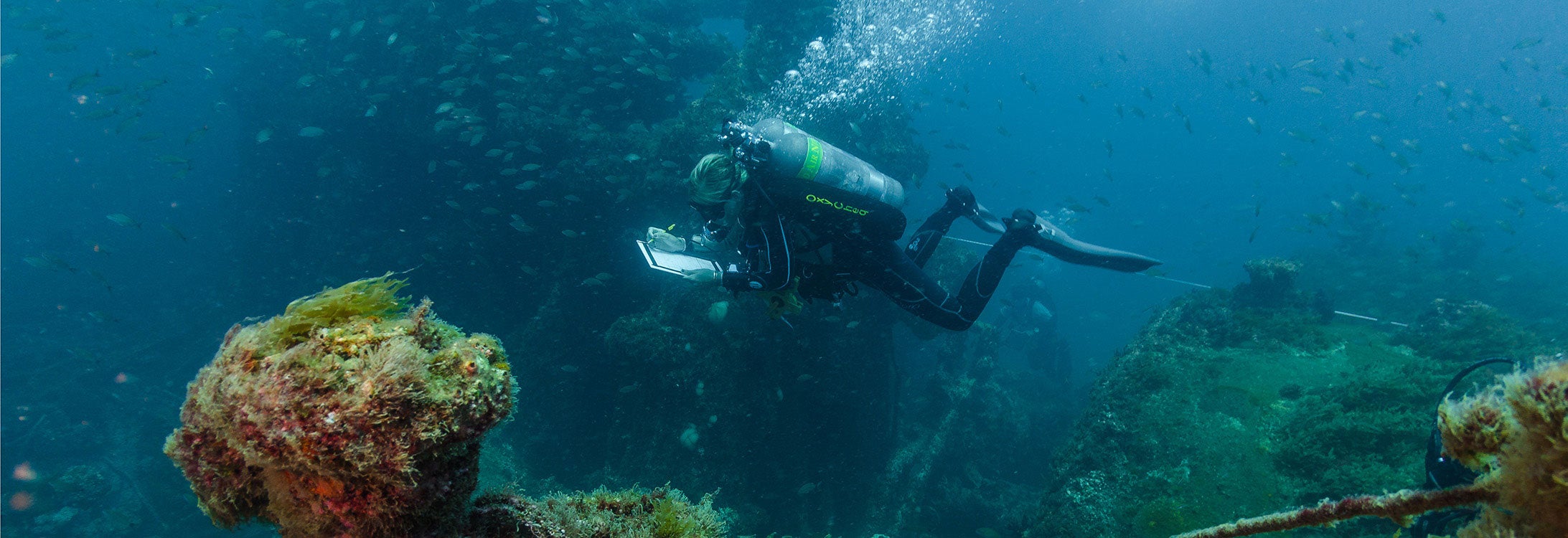ECU team searches for clues amid wrecks of Danish slave ships
The stories of African slaves who in 1710 escaped a pair of wrecked Danish ships off Costa Rica are being told thanks to underwater archeology work by ECU maritime studies professors and students.
Since 2015, the ECU team, directed by associate professors of maritime studies Lynn Harris and Nathan Richards, along with staff archaeologists Jason Raupp and Jeremy Borrelli, has investigated and researched shipwrecks in Cahuita National Park, Limon Provence.
“According to folklore and historical research the ships are either pirate ships or slave traders that wrecked in Punta Cahuita Bay,” said Harris.
During the 18th century, English, Spanish and other colonials competed in the area for local resources and allegiances with Miskito Indians. Pirates careened their ships, captured slaves, purchased food products and took aboard fishermen as turtle harpoonists.
In 1710, due to a navigation error, two Danish slave ships, Christianus Quintus V and Fredericus Quartus IV, are believed to have wrecked, releasing 800 slaves – including men, women and children primarily from West African ports – who were recaptured or assimilated into local communities. Historic records and linguistic studies reveal many were likely of Yoruba origins (present day Nigeria and Benin).

ECU student Joel Cook holds a historic bottle base in a mapping grid unit for photography and immediate redepositing on the seabed.
The ECU team studied two wrecks in the park with unknown identities and searched along the shore for other candidates. They mainly focused on examining coral encrusted cannons, an anchor and structural evidence hidden under the extensive coral reef.
Students mapped a shallow 200-by-200-meter area from the site to shore, yielding hundreds of artifacts, including pottery, pipes, glassware and bricks.
“The most compelling evidence to date is the bricks, which resemble the smaller Danish flensburger type, ranging from about 210 to 230 mm long, historic bottles that date to the period of the wrecks and manillas – or slave trade bracelets – that the community and park officials have acquired in donated collections,” said Harris.
According to Harris, bricks were used to build warehouses, forts and roads at colonial outposts in Africa and the West Indies. Building supplies and other commodities such as ivory tusks were additional paying cargo to offset human cargo mortality on slave voyages and to ballast the ships. Manillas were popularly used by all nations as currency for the purchase of slaves in Africa from the 1500s to 1900s.
Each artifact was mapped and identified within the grid system. Some items were temporarily brought above water for photography on the site and then immediately returned to the seabed.
“A challenge to this project is balancing a research agenda with maintaining the sites in situ as park monuments, educational resources, marine-life substrates and tourism investments for local snorkeling group outfitters,” Harris said.
Through the project, ECU has increased collegial collaborations and partnerships with the University of Costa Rica and local educational marine ambassadorial groups, such as the Centro de Buceo Embajadores y Embajadoras del Mar, that have participated in the projects alongside ECU divers.
